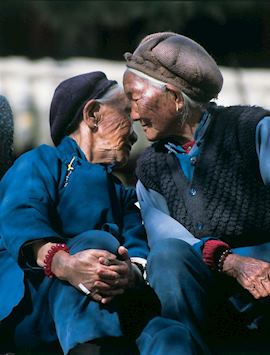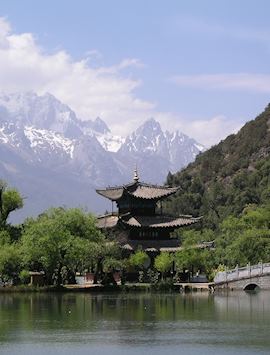By China specialist Stephanie
While there are plenty of large chain hotels in China, increasingly, smaller, more characterful boutique hotels are opening up. Offering an authentic taste of local life, they often place you in a secluded countryside location or reveal bygone China through their architecture.
During my visits, I’ve stayed in a 200-year-old converted farmhouse set in a rural minority village, and a traditional courtyard property just steps from a Buddhist monastery. My hosts were on hand to arrange anything from a guided village visit to learning calligraphy, mah-jong or cookery skills.
Boutique hotels in Yunnan province
Linden Centre
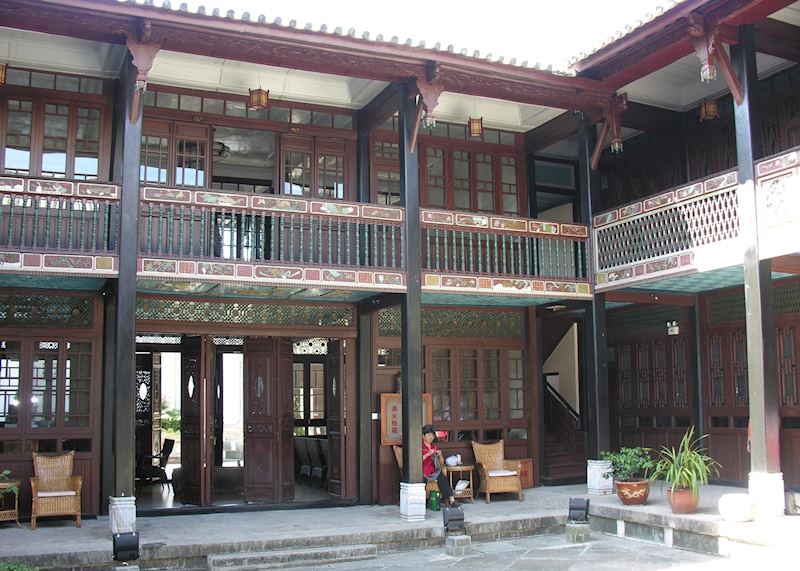
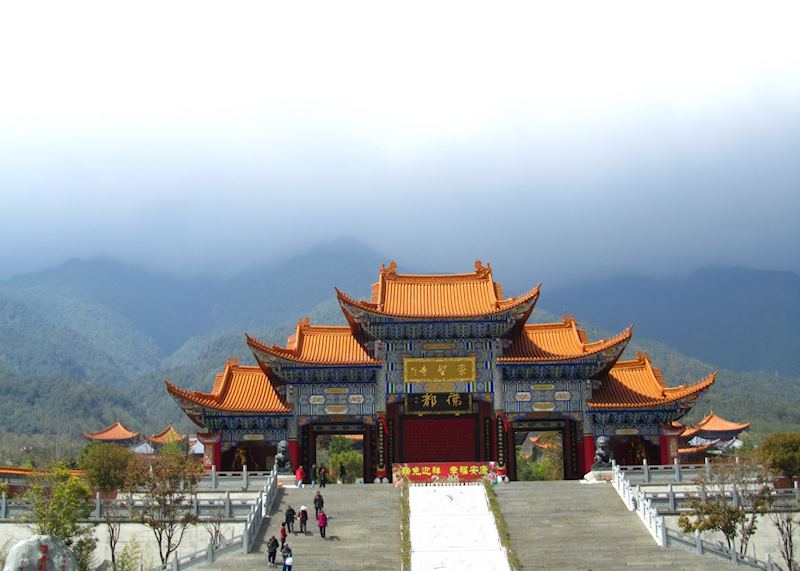
Situated 15 minutes outside Dali, Linden Centre is housed in traditional stone and wood buildings set around four courtyards. Surrounded by farmland, it’s on the outskirts of Xizhou, a Bai minority village.
This is the best hotel I’ve visited in terms of the activities it offers. You can learn how to play Bai musical instruments, take classes in calligraphy, painting and dumpling making, or head out with a guide to explore the village market, calling into the home of a local cheesemaker.
The property has just 14 rooms and two suites, so it feels peaceful even when it’s full. The in-house chef serves Yunnan cuisine using ingredients fresh from that morning’s market. After dinner, I recommend retiring to the roof terrace, which looks out over rice paddies and garlic fields.
The owners — US expats Brian and Jeanee Linden — have faithfully restored the heritage buildings, and antique local artwork hangs on the walls.
What also set the property apart for me was being able to walk or cycle over to Xizhou village. Around 80% of China’s Bai community live in this region and to meet a few of its residents will give you a taster to their way of life.
Songtsam Retreat
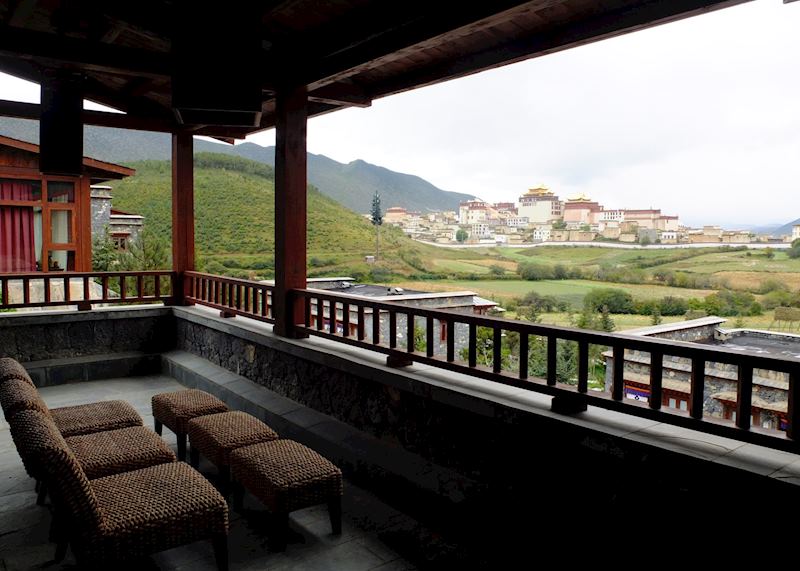
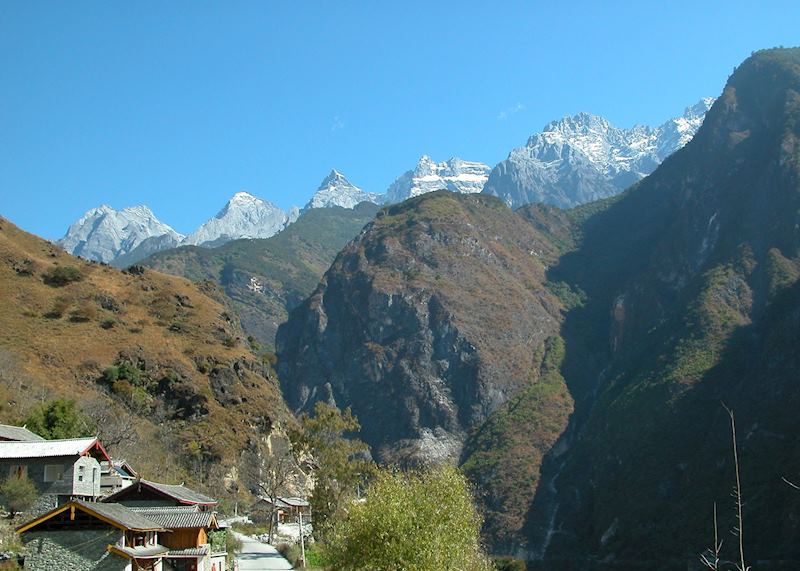
High on a hillside just outside the city of Shangri-La (now also known as Shangri-La City), Songtsam Retreat is set behind the 17th-century Songzanlin Monastery — the largest Tibetan monastery outside the region. Songtsam’s proximity to Songzanlin, coupled with its traditional Tibetan style, makes it feel like you’re staying at a Buddhist retreat.
Walking around, the atmosphere is calm and quiet. You can have a massage in the spa, read a book over a drink in the library, or sit on the terrace looking out over the monastery and snow-capped mountains.
The brick and wood building blends into the landscape, and the 75 rooms are furnished in a Tibetan style, featuring handwoven rugs and oak-panel walls. They each offer plenty of space and privacy — some are housed in their own separate buildings.
The best thing about staying here, though, is you’re close enough to visit the monastery early in the morning or toward the evening, when barely any other visitors are around. As you stroll across the field to the monastery, you might pass monks taking in the fresh air or meditating.
The Bivou
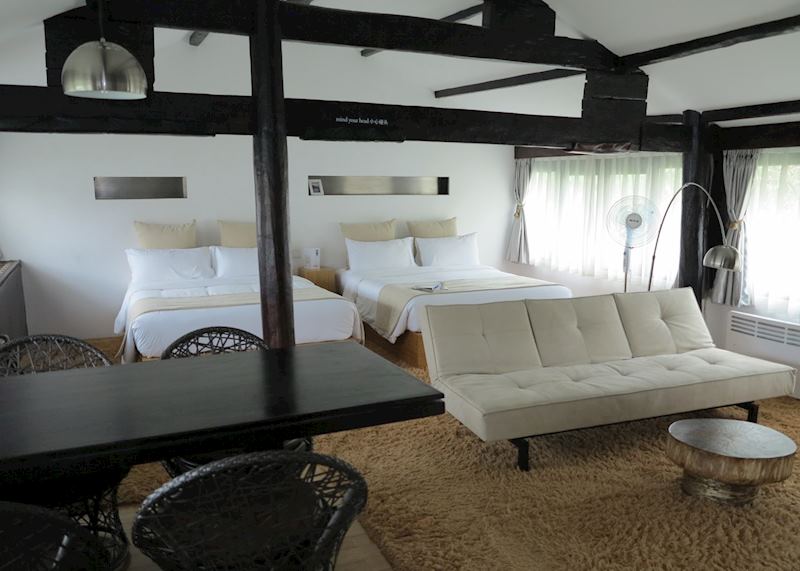
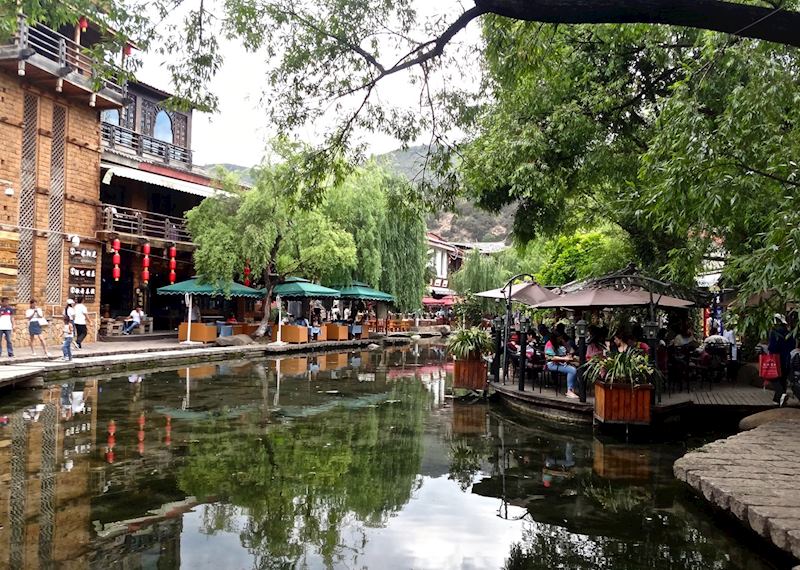
This small, stylish guesthouse is situated just outside the UNESCO World Heritage Site of Lijiang in the historic village of Shuhe. Here, narrow cobbled alleyways lined with trickling streams and wooden buildings are a reminder of how Lijiang was before it became a tourist hotspot.
Shuhe is home to people from the Naxi ethnic minority, and your stay at The Bivou is likely to focus on exploring their culture rather than spending a lot of time at the property. I loved stepping outside and instantly becoming part of village life. As I strolled around, I watched villagers trading wares on the street as women in traditional wide-sleeved gowns worked on their embroidery.
From the outside, The Bivou looks like a typical Naxi farm. Its buildings have been constructed around centuries-old houses and are set around two courtyards. Spacious and comfortable, the 15 rooms combine wooden beams and stone walls with a modern style and amenities.
There isn’t a restaurant on site, but the bistro café serves drinks and light snacks, and you can request dinner in advance — many ingredients for which are grown in the property’s farmland.
Boutique hotels in Beijing
Red Wall Garden Hotel
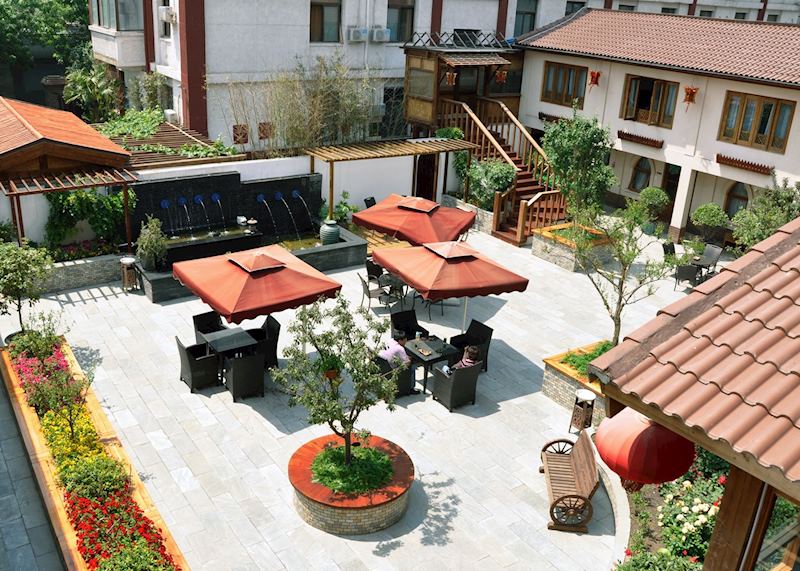

The odds are Beijing will be your first port of call on a China tour. Staying in a boutique hotel in China’s capital means you can dive into Chinese culture straight away.
Set in the historic Shijia Hutong district, Red Wall Garden Hotel is surrounded by a maze of winding alleyways and adjoining courtyard homes, known as hutongs, where local people have lived since the medieval Yuan dynasty.
Together with its location, I particularly liked the property’s large courtyard, which hosts a variety of cultural performances. These can include shadow puppet plays, live folk music and Peking opera shows, all of which paint a vivid picture of Chinese traditions. The courtyard also serves as the hotel’s dining area — dishes cover China’s eight regional cuisines.
At the hotel’s Courtyard Bistro Tea House you can join a traditional tea ceremony. These are led by the resident tea master, who tells you about the 4,000-year history of tea making in China and demonstrates different tea-brewing techniques.
Double Happiness Courtyard Hotel

Still located within Beijing’s hutongs, in a 500-year-old building, Double Happiness Courtyard Hotel is a good-value alternative to Red Wall Garden Hotel.
The rooms feature kang-style beds (where the mattress is laid on a brick platform), as well as period decor, and the restaurant serves both Chinese and Western cuisine. The hotel’s open courtyard areas are filled with greenery.
Boutique hotels in Guangxi province
Li-An Lodge

There are several lodges among Longji’s Dragon’s Backbone rice terraces, but Li-An Lodge has the best position of all. From its position on the slopes of Pingan village, it has unobstructed views over the terraces, which spiral out over the surrounding hills and valleys.
The village is so remote you can only access it via a steep 40-minute walk. Waking up to sunrise views over the rice terraces and having access to them at any time makes the effort worthwhile. I spent time trekking through the terraces with my guide. The fields stretch for miles in every direction, broken up by the occasional hamlet, and we passed local men and women tending to their crops.
The lodge itself is entirely wooden and was built without nails using an old Chinese technique. Designed and owned by Chinese artist and photographer Keren Su, its walls display photographs and artwork depicting rural life. Each of the 16 rooms has a different theme related to Chinese culture, from calligraphy to celadon porcelain and Chinese music.
Yangshuo Tea Cozy
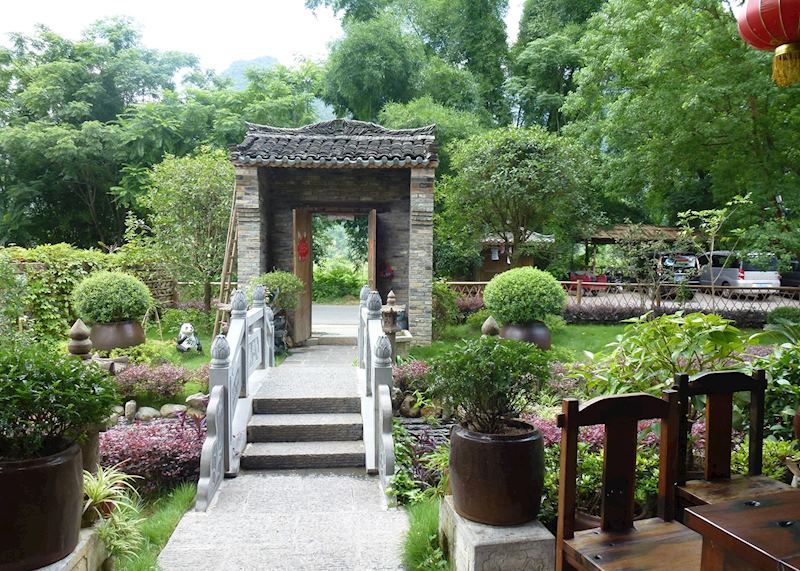
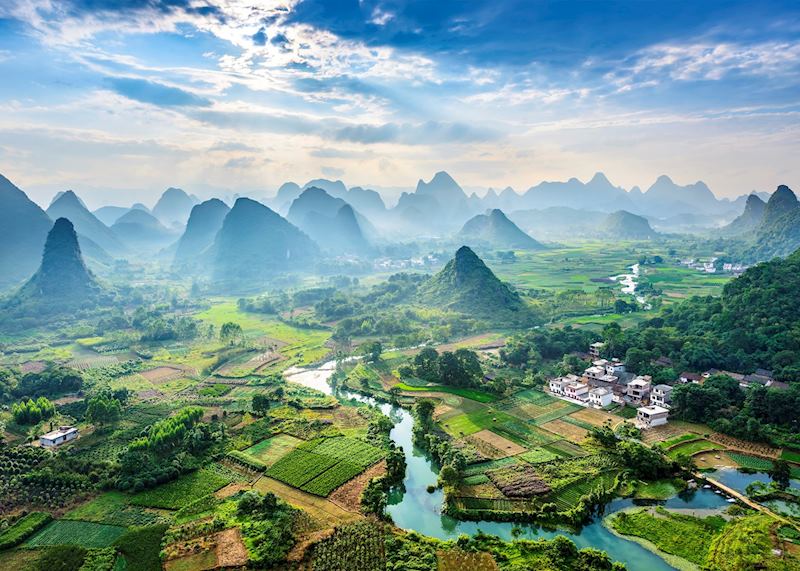
Surrounded by limestone karsts and green farmland, Yangshuo Tea Cozy is an intimate, 12-room hotel that embraces the peace and beauty of rural China. Constructed in the local style using dark wood and stone, the property is 20 minutes’ drive west of Yangshuo, set on the banks of the Dragon River.
Because the hotel is so small, the service is personal — rather like you’re staying in someone’s home. Rooms are individually furnished with local artwork and antiques and have their own balconies overlooking the countryside.
You might find yourself in the Tea Cozy’s Chinese garden at both ends of the day. Breakfast is served among magnolia trees and carp-filled lotus ponds. Its wooden pavilion is a good spot for evening drinks by the light of Chinese lanterns.
There are lots of activities you can do from here, including cycling through nearby fields and Ming-dynasty villages, bamboo raft rides along the river, and guided visits to local tea plantations followed by a tea ceremony in the property’s own teahouse.
You can also help harvest ingredients from the organic vegetable garden. The resident chef then uses them when cooking your dinner, which you can sit down to on the rooftop restaurant. Cookery classes with the chef are also offered, if you’re keen on learning Chinese cooking techniques.
Boutique hotels in Chengdu
Buddha Zen

Chengdu is a major modern city, but arriving at Buddha Zen Hotel, tucked away from the noise down a pedestrian-only street, you sense you’re entering a different time zone. Built of brick and carved wood, the hotel has an architecture and style that reflects the 1,300-year-old Wenshu Monastery, which is just over the street.
Set around an open courtyard, the hotel’s 35 rooms and suites feature dark-wood furniture and Chinese artwork, alongside modern bathrooms. Some have their own balcony overlooking the street. The hotel’s facilities reflect its modern-facing (the spa is a highlight) yet traditional (there’s also a teahouse displaying local antiques) approach.
Vegetarian meals are served in the property’s Rong Zhai Restaurant, but I also recommend heading out into Chengdu to try the regional signature dish: spicy Chongqing hotpot. This consists of a large pot of broth spiced with Sichuan peppers, added to which are meats, mushrooms and vegetables.
MGM Grand Diaoyutai Boutique
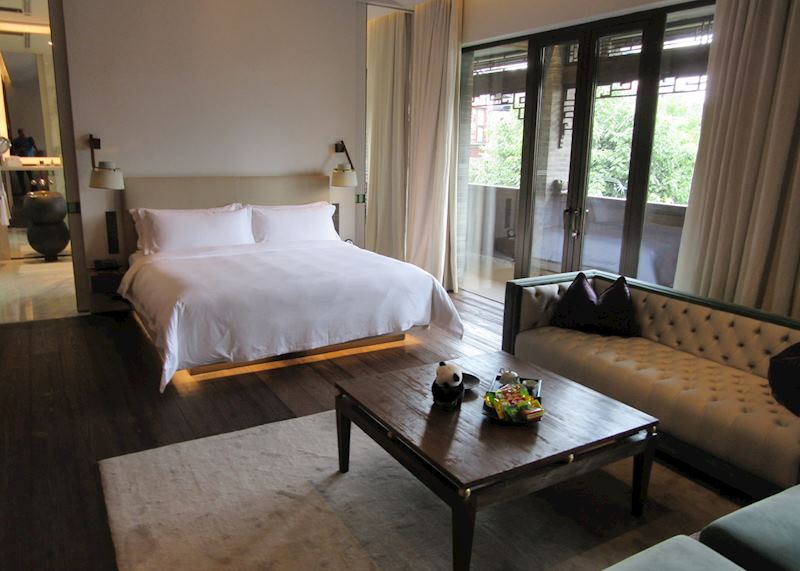

Despite being part of a chain, this 45-room hotel still feels authentic. French designer Bruno Moinard has ensured that its stylish interiors marry old- and modern-day China, using traditional red shutters, exposed bricks, wooden ceilings and latticework, while maintaining a contemporary minimalist look.
The building is set around two adjoining courtyards and is located in Chengdu’s Kuanzhai Alley (also known as Wide and Narrow Alley), a protected district that dates back to 1718. Here, you can stroll among Qing dynasty buildings, browsing shops and stopping for tea in one of the traditional teahouses.
MGM Grand Diaoyutai Boutique's rooms are decorated to continue the theme of old-meets-new. Each has a seating area and views of either the courtyard or the street below. Some also have balconies.
The property’s Royal Court Chinese Restaurant offers a fine-dining experience. For a more casual atmosphere, the Royal Garden Lobby serves dishes from across Asia. At the sleek, modern Fangfei Garden Lounge you can order a drink in the evening or high tea in the afternoon.
Boutique hotels in Pingyao
Jing’s Residence
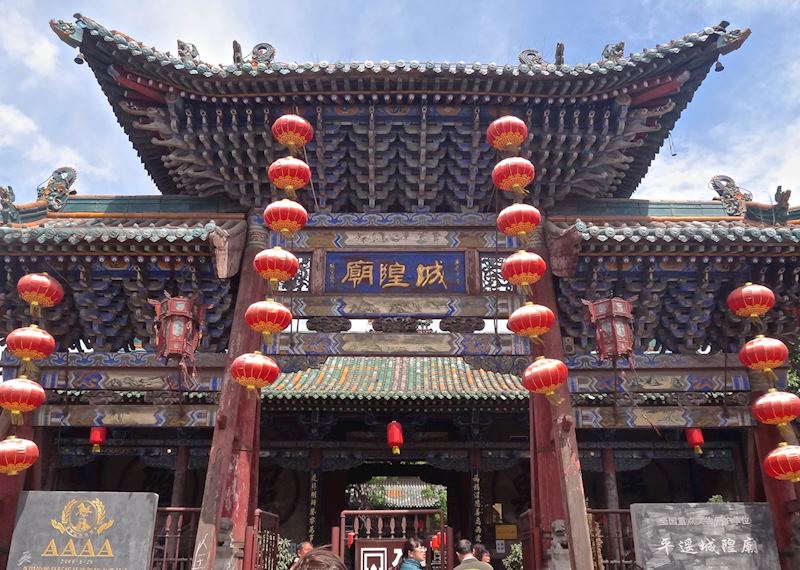
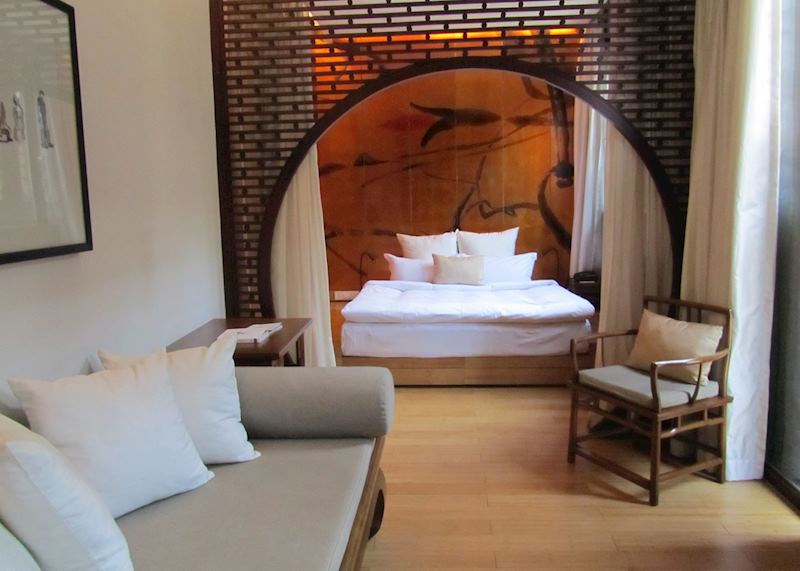
Situated on a quiet side street in the heart of historic Pingyao, Jing’s Residence has reinvigorated an 18th-century courtyard building that once belonged to a wealthy silk merchant.
What I like about this property is the owner’s determination to maintain the building’s original look and character, while still bringing it into the 21st century. Local craftsmen helped to renovate and transform the property into an 18-room hotel, using second-hand bricks and tiles to remain faithful to the local style.
The hotel comprises several pavilion buildings set around four courtyards, each connected by brick pathways and planted with bamboo. Tables and chairs are set outside each pavilion, where you can relax with a drink.
Stepping inside, the impression is of entering a contemporary spa retreat. Yet, throughout the property are traditional touches such as carved window frames, bamboo flooring and kang-style beds. Rooms and suites are individually decorated, while the restaurant focuses on regional noodle dishes.
During your stay, you can take part in cultural classes such as paper cutting and noodle making. There’s also the option to head out on a historic tour of Pingyao with a local university professor, exploring the ancient city walls and learning about its prosperous past as the banking capital of China.
Start planning your trip to China
Start thinking about your experience. These itineraries are simply suggestions for how you could enjoy some of the same experiences as our specialists. They're just for inspiration, because your trip will be created around your particular tastes.
View All Tours in China

